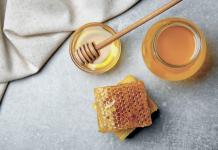How Do You Get Skin Cancer?
According to the Skin Cancer Foundation, skin cancer is “the uncontrolled growth of abnormal skin cells. It occurs when unrepaired DNA damage to skin cells (most often caused by ultraviolet radiation from sunshine or tanning beds) triggers mutations, or genetic defects, that lead the skin cells to multiply rapidly and form malignant tumors.” Explaining skin cancer is broad, as there are multiple types and precancers, including actinic keratosis, atypical moles, basal cell carcinoma, melanoma, merkel cell carcinoma, and squamous cell carcinoma.
Out of the types of skin cancer, melanoma is expressed to be less common compared to others but considered the most dangerous form, killing an estimated 10,130 of Americans each year. Often resembling or developing from moles, it is mainly caused by intense, occasional UV exposure (mostly leading to sunburn), especially in individuals who are genetically predisposed. In a nutshell, sun exposure, having a number of skin moles, skin type, family history, and having a weakened immune system are risk factors for melanoma. And according to new research, your favorite wine may also be increasing your risk…
Linking White Wine and Skin Cancer
In a recent study published in the journal Cancer, Epidemiology, Biomarkers & Prevention, the intake of white wine could raise melanoma risk by 13 percent! Eunyoung Cho, an associate professor of dermatology and epidemiology at Brown University’s Warren Alpert Medical School, and colleagues researched the link between alcohol and melanoma, as alcohol is an already known risk for factor for numerous cancer forms. But in the study, the researchers analyzed over 210,000 adults’ food frequency questionnaires, detailing their alcohol intake which included the type and amount of alcohol consumed. Following up with participants occurred an average of 18 years later, eventually leading to the findings of compelling data. Of all the alcohols – beer, red wine, and liquor white wine was the only type to show a significant link to melanoma. Individuals who consumed 20 grams or more of alcohol per day were 2 percent more likely to be diagnosed with melanomas of the head, neck, or extremities, but 73 percent more likely to be diagnosed with melanomas of the trunk, suggesting a strong association between alcohol intake and melanoma of the body that are generally less exposed to the sun.
Potential Explanations and Paralleled Recommendations
Although the primary explanation for white wines’ link to skin cancer is not well-understood, acetaldehyde may offer the largest justification. Acetaldehyde is essentially the byproduct of alcohol and has shown to damage DNA and prevent its repair, ultimately raising the potential of carcinogenesis (the formation of cancer). While other alcohols transpire into acetaldehyde in the body, white wine has shown to have higher levels compared to beer and liquor. And even with matched levels in red wine, its antioxidants may offset the risks, Cho defended.
“The clinical and biological significance of these findings remains to be determined, but for motivated individuals with other strong risk factors for melanoma, counseling regarding alcohol use may be an appropriate risk-reduction strategy to reduce risks of melanoma as well as other cancers,” Cho said. Additionally, the recommended limit of alcohol intake is up to two servings per day for men while women are limited to one. And when it comes to wine, 5-ounces is considered one serving, not the entire 25-ounce bottle…
Reference:
Melanoma. Skin Cancer Foundation.






